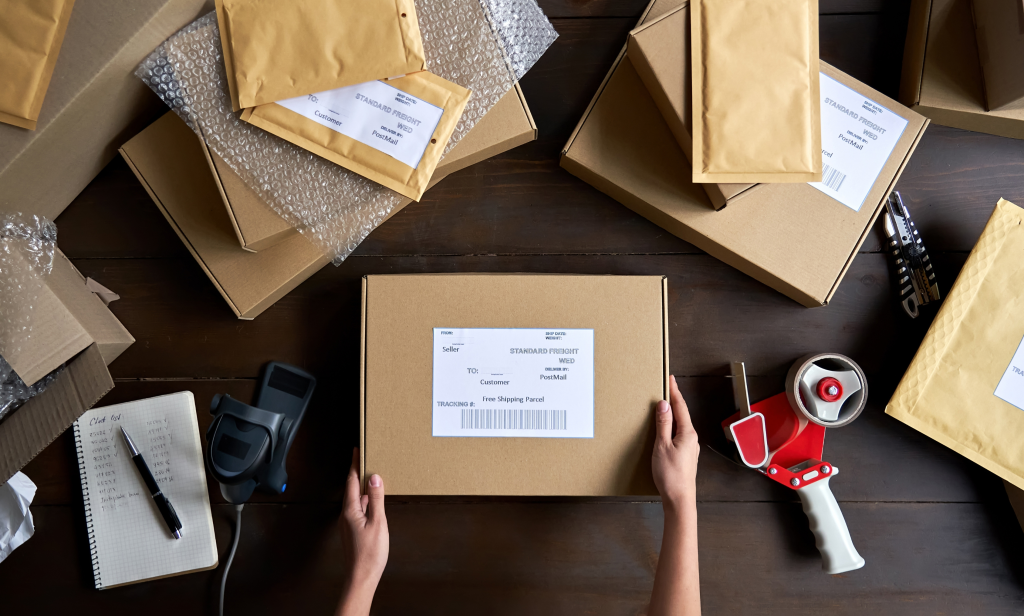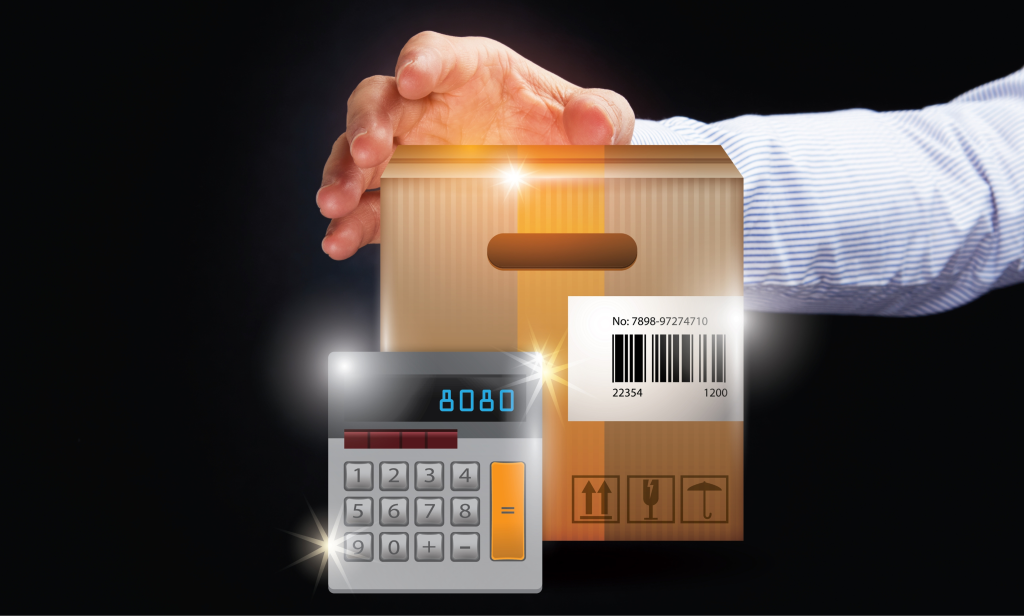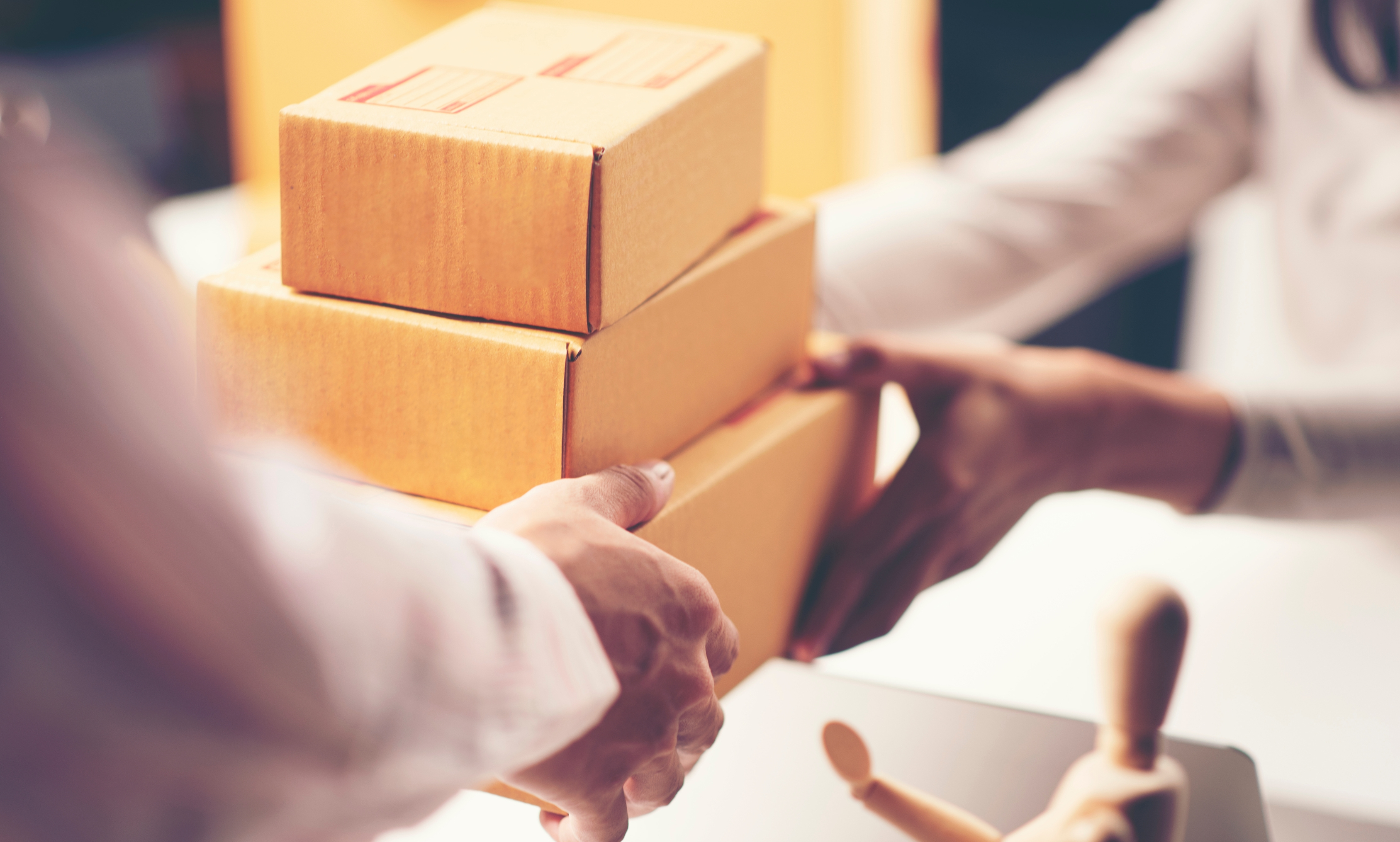Amazon FBA is a great way to maximize the reach of your products and give customers a seamless, convenient shopping experience. But in order to benefit from it, you need to know how to ship your products properly. That’s why we’ve put together this comprehensive guide on how to ship to Amazon FBA.
In this guide, you’ll learn how to ship your products safely and efficiently, so that you can take advantage of the ease of Amazon FBA. Let’s get started!
Step One: Change A Product To Fulfilled By Amazon

The first step to selling on Amazon is to get your product listed as Fulfilled by Amazon (FBA). This means that the item will be stored, packed, and shipped directly from an Amazon fulfillment center. Using the FBA program has many benefits such as Access to Prime customers, enhanced shipping speed, and a hands-off fulfillment process. Amazon will also take care of customer service, returns, and refunds.
To do this from your Amazon seller central account, go to ‘Manage Inventory’ and find the product you want to list. Click the drop-down next to the edit menu and choose ‘Change to Fulfilled by Amazon’. After that, you’ll need to enter the product details such as price and condition. Once you’ve filled out the required information, click ‘Save and Finish’ and your item will be listed on Amazon.
Make sure that you’re aware of the fees associated with FBA before listing your products. Amazon will charge a monthly storage fee, as well as handling and pick & pack fees as part of its fulfillment service. Now that you’ve changed a product to Fulfilled by Amazon, it’s time to move on to the next step in the process.
Step Two: Label Your Products
After you’ve changed a product to Fulfilled by Amazon, the next step is to label your items. Labeling products with unique barcodes or UPCs helps ensure that your orders are accurately tracked and fulfilled. You can purchase labels from third-party vendors or generate them yourself if you have the right equipment.
There are two options for labeling products: a manufacturer’s barcode and an Amazon FNSKU.
- The manufacturer’s barcode: This is a unique GS1 barcode that you can create for your product.
- Amazon FNSKU: This is a barcode generated by Amazon and used to track inventory in the FBA program.
To generate your own Amazon FNSKU, navigate to the product inside the Manage Inventory page and click the drop-down arrow next to the edit button. Here you’ll see an option to ‘Print item labels’. After generating your own barcodes, make sure they are printed on a durable material that can withstand wear and tear during transit and storage. Print labels for each unit inside the shipping carton and place them on the outside of the package as well.
Step Three: Prepare For Shipping

Once you’ve labeled your products, it’s time to prepare for shipping. The shipping process includes packaging and protecting the items, so they arrive safely at Amazon fulfillment centers. Make sure that your products are packaged securely with durable materials such as bubble wrap or foam.
Label each box clearly with the barcodes you generated earlier and include a packing slip with order details. Once you’ve finished packing your shipping boxes, you can calculate the shipping costs using Amazon’s Shipping Calculator or a third-party service.
After the packages are ready to go, print out the necessary paperwork such as your shipment manifest and customs forms. Finally, arrange for a courier to pick up your items and deliver them to the Amazon fulfillment center.
Step Four: Find A Freight Forwarder
It’s a company that specializes in the transport of goods from one destination to another. They are responsible for getting your items to Amazon fulfillment centers quickly and efficiently.
When looking for a freight forwarder, make sure they have experience shipping to Amazon fulfillment centers and that they are familiar with the rules and regulations for transporting goods.
You should also ensure that their rates are competitive and that they have a good reputation within the industry. Additionally, look for freight forwarders who offer additional services such as tracking services to keep an eye on your shipments while they’re in transit. Finally, make sure the freight forwarder is conveniently located near your point of origin and the Amazon fulfillment center you’ll be shipping to.
Finding the right freight forwarder can take some time but it’s worth it in the long run. Your freight forwarder will be responsible for getting your goods safely to their destination and on time, so make sure you take the time to do your research. When it comes to shipping goods to Amazon fulfillment centers, having a reliable freight forwarder is key.
Step Five: Create A Shipping Plan On Amazon

The final step in the process is to create a shipping plan on Amazon. You can do this by logging into your account, navigating to the Inventory page, and clicking “Create Shipping Plan”. Here you will enter information about the items you are sending, where they will be shipped from and to, and any other relevant details.
Once you’ve filled out the shipping plan details, Amazon will generate a packing slip that must be included in each shipment. You should also print out and attach the applicable customs forms to your packages before sending them off. Finally, you’ll need to make sure the packages are properly labeled and ready for FBA shipment.
When your products have been shipped and arrive at Amazon, they will be stored in their fulfillment centers until a customer orders them. Then Amazon will handle all of the shipping and tracking for you. Plus, you can use Amazon’s shipping tools to keep track of all your FBA shipments and any problems that may arise.
With this process, you can be sure that your products will be delivered quickly and safely to customers all over the world. This is one of the many benefits of selling on Amazon!
These five steps will help you get started on shipping your products to Amazon fulfillment centers. With some preparation, research, and the right freight forwarder, you’ll be able to launch your business quickly and efficiently.
What Are The Benefits Of Using Amazon Fulfillment Centers?
Now that you know how to get your products to Amazon fulfillment centers, let’s look at the benefits of using them.
1. Amazon’s Shipping Costs

The cost of shipping products to Amazon fulfillment centers is much lower than that of other third-party logistics (3PLs) providers, so you’ll be saving money on shipping fees. This is because Amazon has its own delivery infrastructure, which is highly efficient and reliable. Plus, Amazon’s FBA program also offers free shipping on orders of $25 or more for Prime members. For non-Prime customers, shipping costs vary by item weight and distance traveled.
There are also expedited options available if you need to get your product delivered quickly. Moreover, Amazon has negotiated discounted rates with major carriers like UPS and FedEx, which helps keep your shipping costs down. Overall, Amazon’s shipping costs are among the most competitive in the industry especially if you’re dealing with any Amazon-partnered carrier.
2. Fast And Reliable Delivery
Amazon fulfillment centers are known for their fast and reliable delivery. The company’s vast distribution network, which spans across the globe, is able to get your products shipped quickly and efficiently. This means that customers will receive their orders on time and in perfect condition.
In addition, Amazon also offers same-day shipping services in select areas. This helps ensure that customers have the products they need right away, which can help to boost customer satisfaction and loyalty. Shipping queue times can also be reduced with Amazon’s Prime Shipping.
To make sure that customers continue to receive their orders on time, Amazon has invested heavily in its logistics infrastructure. They have built a state-of-the-art warehouse management system that keeps track of every single item and its location within the facility.
This helps to streamline processes, as workers are able to quickly locate orders and ensure that they are shipped out on time. Amazon also uses advanced routing algorithms to identify the most efficient delivery routes for their drivers, which helps them to deliver orders quickly and cost-effectively.
Amazon’s commitment to fast and reliable delivery has been a major factor in the company’s success. The company understands that customers expect their orders to arrive quickly, and they strive to meet these expectations every time. From their robust Amazon FBA warehouse management system to their advanced routing algorithms, Amazon is constantly working to ensure that customers receive their orders in a timely manner.
3. Comprehensive Inventory Management
When you store your inventory at the Amazon fulfillment center, you can trust that it will be managed and tracked with precision. The company’s sophisticated software tools make it easy to keep track of FBA inventory levels and make sure that they are accurate. This helps you avoid any costly errors, as it ensures that all orders have the right items in stock.
Amazon also makes it easy to add and remove products from your inventory at these centers. You can easily make changes through their web interface or through their API. This helps to speed up the process of adding new products and taking existing ones off the shelves.
4. Quality Customer Service

When customers have questions or concerns about their orders, they can rely on Amazon’s customer service team to help them out. The company’s highly-trained and experienced staff is available 24 hours a day, 7 days a week to answer any queries. This helps to provide peace of mind for customers, as they know that they can always get help when they need it.
In addition, Amazon also provides a comprehensive self-service portal for customers to manage their orders and returns. This helps them quickly find the information they need without having to wait on the phone or interact with customer service representatives. It’s also a great resource for customers who want to self-resolve their issues.
5. Comprehensive Returns Management
When customers need to return products, Amazon makes it easy for them. The company offers a convenient returns portal that allows customers to quickly print out the necessary paperwork and drop off their items at designated locations. This helps to make the process as simple and painless as possible.
Moreover, Amazon also handles all of the paperwork and other processes related to returns. This includes processing refunds, issuing replacement items, and collecting feedback from customers. This helps streamline and simplify the entire process for both customers and Amazon sellers.
These are just a few of the ways that Amazon is helping to revolutionize e-commerce. From their lightning-fast delivery services to their comprehensive inventory management, they are continuously striving to make online shopping easier and more efficient for everyone involved. It’s no wonder why the company has become so successful over the years!
FAQs
Can you ship to Amazon FBA yourself?
Yes, you can ship your products to Amazon FBA yourself. However, it is strongly recommended that you use Amazon’s own shipping services for this purpose as they are designed to ensure that your items arrive safely and on time.
Do you have to pay to ship to Amazon FBA?
Yes, there are fees associated with shipping products to Amazon FBA. These fees will vary depending on the size and weight of your items as well as their destination.
How do I track my orders sent to Amazon FBA?
You can track your orders sent to Amazon FBA using the order tracking feature available in your Amazon seller account. This will allow you to view the current status of your orders and ensure that they arrive at their destination in a timely manner.
What happens if my item is damaged during shipping?
If an item is damaged during shipping, Amazon’s customer service team will work with you to process a refund or replacement. They will also investigate the issue to determine the cause of the damage.
Do I have to pay for returns sent to Amazon FBA?
No, you do not have to pay for returns sent to Amazon FBA. All return shipping fees are paid by Amazon and they will also process any refunds or replacements as necessary.
Conclusion
The bottom line is that shipping to Amazon FBA is a relatively straightforward process. With the right tools, planning, and organization, you can quickly and efficiently get your products into the hands of customers. From figuring out which products are best suited for FBA fulfillment to understanding all of the costs associated with shipping to Amazon FBA, following this guide will help make sure that you are ready to ship your items and make the most of Amazon FBA.
Just remember to pay attention to the details and take your time when you set up your FBA account and begin shipping. With the right guidance, you can ensure a successful shipment of products to Amazon FBA that will help maximize sales and profits.
Be sure to check out our other e-commerce guides.

